The Uprising by Diego Rivera is an iconic mural that captures the essence of the Mexican Revolution, showcasing the struggle and resilience of the Mexican people. This captivating artwork invites us to delve into the historical context, artistic style, and social significance that have made it a timeless masterpiece.
Rivera’s bold use of symbolism, vibrant colors, and realistic depiction of the uprising’s participants brings the revolution to life, making this mural a powerful testament to the power of art in conveying social and political messages.
The Uprising: Historical Context
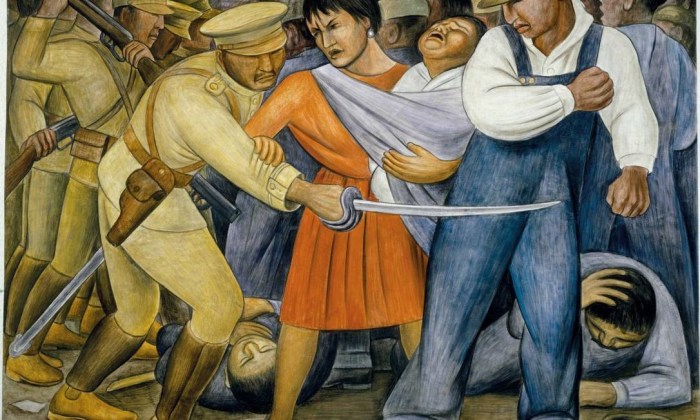
Diego Rivera’s “The Uprising” is a powerful depiction of the Mexican Revolution, a transformative event that reshaped Mexico’s political and social landscape.
The revolution erupted in 1910, sparked by widespread discontent with the dictatorship of Porfirio Díaz. Years of economic inequality, political oppression, and foreign exploitation had fueled a deep sense of injustice among the Mexican people.
The Mexican Revolution
The revolution was a complex and multifaceted struggle, involving various social and political groups with diverse goals. However, at its core, it was a fight for land, justice, and democracy.
- Land Reform:Peasants, who constituted the majority of the Mexican population, yearned for access to land, which had been concentrated in the hands of a few wealthy landowners.
- Political Rights:The revolution sought to establish a more democratic system, where all citizens had a say in their government. This included the right to vote, hold office, and participate in political decision-making.
- Economic Justice:Workers and peasants demanded fair wages, better working conditions, and an end to exploitation by foreign companies and domestic elites.
The Role of Workers and Peasants
Workers and peasants played a pivotal role in the Mexican Revolution. They formed the backbone of the revolutionary armies and provided the driving force behind the movement’s demands for social and economic justice.
Peasants, armed with machetes and other improvised weapons, fought alongside revolutionary leaders like Emiliano Zapata and Pancho Villa. They fought for the redistribution of land and the creation of a more equitable society.
Workers, organized into labor unions, joined the revolutionary struggle to demand better wages, safer working conditions, and the right to form unions.
Composition and Symbolism
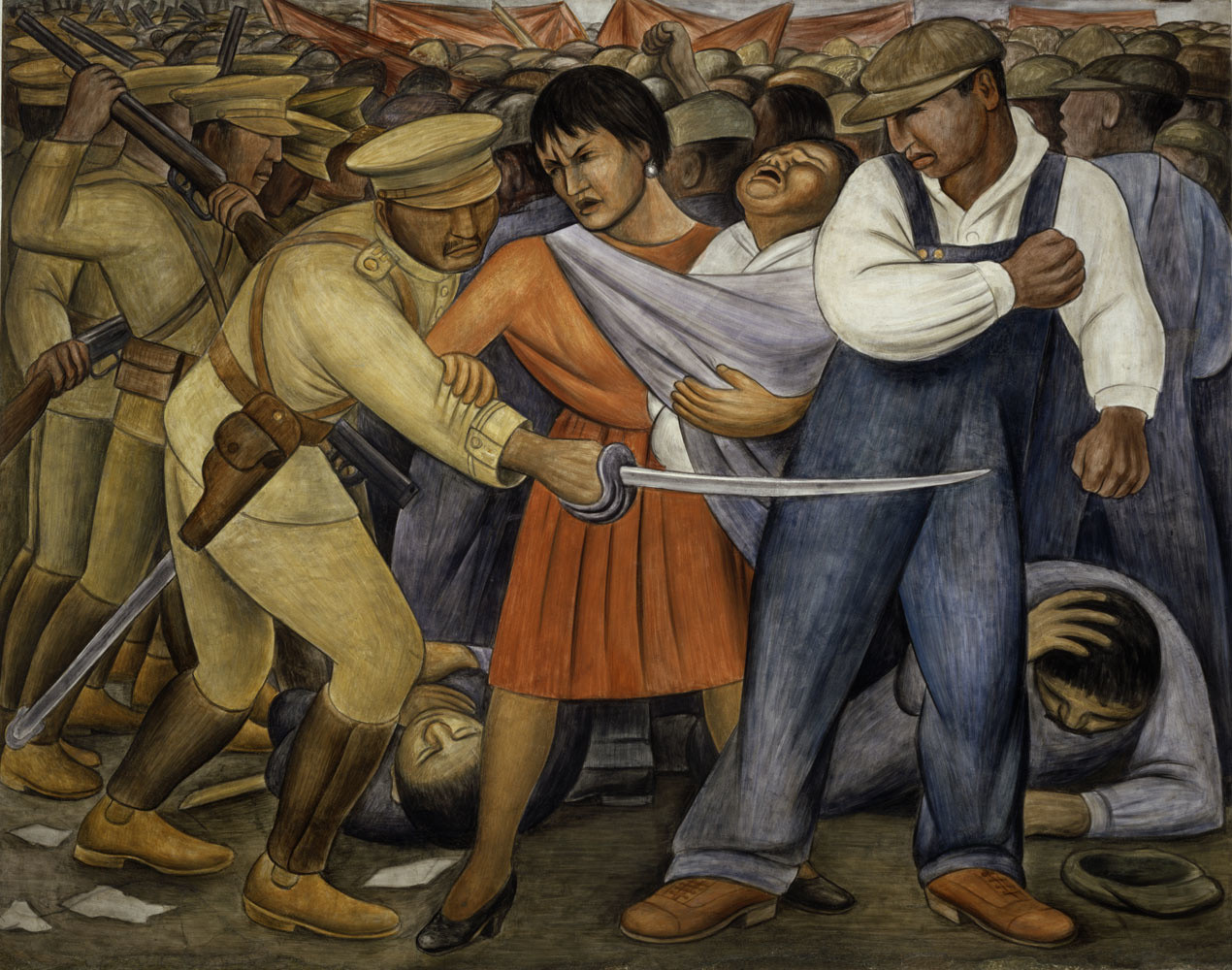
Rivera’s “The Uprising” is a dynamic and symbolic composition that captures the essence of the Mexican Revolution. The painting is dominated by central figures with raised fists, rendered in bold colors that convey the intensity and emotion of the moment.
Central Figures and Colors
The central figures in the painting are a group of workers and peasants, their faces etched with determination and anger. Their raised fists symbolize their defiance and the power of the working class to overthrow the oppressive regime. The use of red, a color associated with blood and revolution, further emphasizes the intensity of the struggle and the sacrifices made.
Symbolism
Rivera employs various symbols to convey the message of the revolution. The broken chains and shackles represent the liberation from oppression, while the rising sun in the background symbolizes hope and the dawn of a new era. The inclusion of indigenous figures highlights the role of marginalized communities in the revolutionary movement.
Artistic Style and Techniques
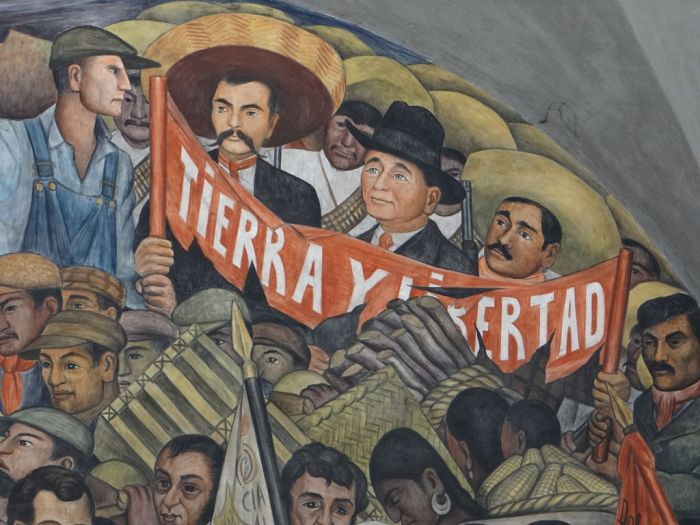
Diego Rivera’s “The Uprising” showcases his distinct artistic style, which blends realism with the vibrant aesthetics of Mexican muralism. Rivera’s use of bold lines and vivid colors creates a sense of dynamism and urgency, capturing the intensity of the depicted events.
Realism and Muralism, The uprising by diego rivera
Rivera’s commitment to realism is evident in the detailed portrayal of the figures and their expressions. He depicts the workers and peasants with a sense of dignity and humanity, emphasizing their struggle and determination. The muralistic elements, such as the large scale and the integration of architectural features, enhance the immersive experience for the viewer, making them feel part of the depicted scene.
Bold Lines and Vibrant Colors
The painting is characterized by its bold, thick lines that Artikel the figures and create a sense of movement and energy. The vibrant colors, including reds, yellows, and blues, contribute to the emotional intensity of the work, conveying the passion and urgency of the uprising.
Mexican Folk Art and Pre-Columbian Motifs
Rivera’s style is also influenced by Mexican folk art and pre-Columbian motifs. The use of flat, decorative patterns and the inclusion of indigenous symbols evoke a sense of Mexican identity and connect the painting to the country’s cultural heritage.
Social and Political Significance
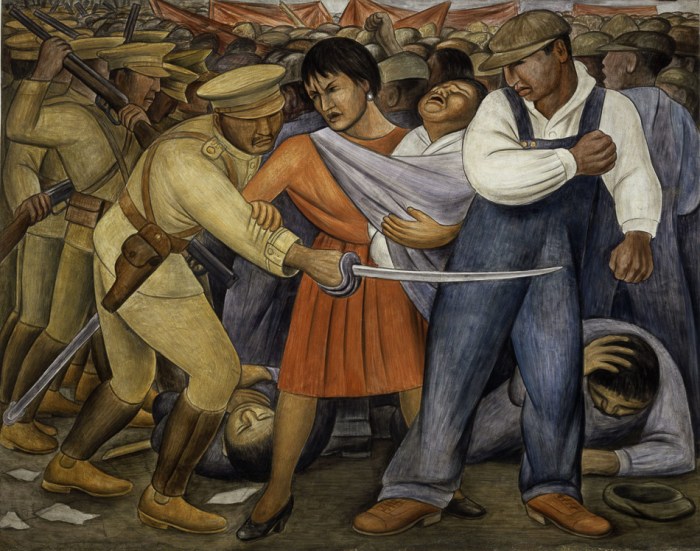
“The Uprising” holds immense social and political significance, reflecting Diego Rivera’s socialist beliefs and unwavering commitment to social justice. The painting serves as a poignant depiction of the Mexican Revolution, capturing the struggles and aspirations of the Mexican people during a pivotal moment in their history.
Rivera’s Socialist Beliefs
As a staunch socialist, Rivera believed in the power of art to promote social change and uplift the oppressed. Through “The Uprising,” he aimed to shed light on the injustices faced by the Mexican working class and peasantry, and to inspire a sense of solidarity and hope among them.
The painting’s central figures, representing workers, peasants, and indigenous peoples, embody the strength and resilience of the Mexican people in their fight for liberation.
Impact on the Mexican People
“The Uprising” had a profound impact on the Mexican people, serving as a powerful symbol of their collective struggle and aspirations. The painting resonated deeply with the Mexican public, who saw themselves reflected in the faces and experiences depicted on the canvas.
The Uprising by Diego Rivera, an iconic mural, captures the intensity of a social revolt. To enhance your understanding of Rivera’s artistry, you might find the WSET Level 1 Practice Test helpful. Returning to Rivera’s masterpiece, its vivid depiction of the uprising serves as a poignant reminder of the struggles and triumphs of the past.
It became a source of inspiration and empowerment, fueling the revolutionary spirit and fostering a sense of national identity.
Legacy and Influence: The Uprising By Diego Rivera
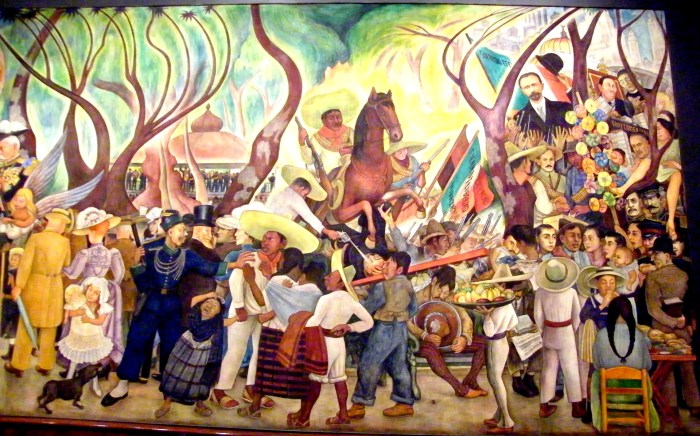
Diego Rivera’s “The Uprising” has left an indelible mark on the art world and beyond. Its powerful imagery and political message continue to resonate with audiences today.
Influence on Artists and Activists
The painting has inspired generations of artists and activists. Its depiction of the struggle for social justice has become an iconic symbol of resistance and empowerment. Artists such as José Clemente Orozco and David Alfaro Siqueiros have cited “The Uprising” as a major influence on their work.
Resonance with Audiences Today
“The Uprising” remains relevant today due to its timeless themes of oppression, resistance, and hope. In an era marked by social and political unrest, the painting’s message of solidarity and the power of collective action continues to resonate with audiences worldwide.
Question Bank
What is the historical context of The Uprising?
The mural depicts the Mexican Revolution, a period of political and social upheaval that transformed Mexico in the early 20th century.
What is the significance of the raised fists in the mural?
The raised fists represent the strength and determination of the Mexican people in their fight for social justice.
How does Rivera’s use of color contribute to the message of the mural?
Rivera’s use of vibrant colors, particularly red, conveys the passion and intensity of the revolution.